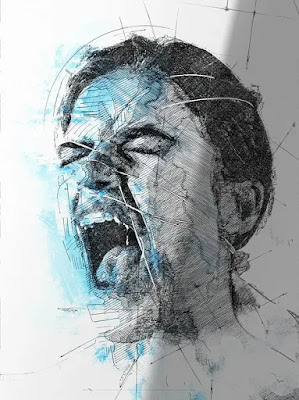Cotard Syndrome: The Walking Corpse
"No one wants to listen to a word I'm saying. I begged them to take me to the morgue but they keep asking me why I want to go there. Well, isn't it obvious? Can't they see I'm dead?"
Cotard syndrome, also known as walking corpse syndrome, Cotard delusion and nihilistic delusion, is a condition in which someone thinks they have lost organs, blood, body parts, or that they are actually dead. The condition was first described by doctor Jules Cotard in 1882. So, what makes this kind of mental disorders emerge, and do these people really believe they are dead?
The Causes of Cotard Syndrome
Up till now, there are no specific causes of the syndrome. However, it does indicate that there are some other serious problems, such as mental disorders or health conditions that affect the brain. These include, bipolar disorder, schizophrenia, dissociative disorder, catatonia, psychotic depression, depersonalization disorder, and postpartum depression. Moreover, the syndrome is also related to some serious neurological conditions, such as dementia, brain tumors, stroke, brain infections, epilepsy, Parkinson’s disease, migraines, traumatic brain injuries, and multiple sclerosis.
Cotard's Symptoms
This syndrome causes severe symptoms, among which is the patient's refusal to eat or drink and hearing voices telling them that they are dead. However, one of the main and most important symptom is nihilism; It is the belief that nothing really exists or has any value at all. Patients may also feel that they smell like rotting fish, they are dead, or that they have never even existed. These feelings are not only felt about their whole body, in fact, some patients get these feelings in regard to their organs, limbs or even their soul.
Other symptoms include depression (89% of the documented cases suffer from it), guilt, anxiety, preoccupation with hurting yourself or death, hypochondria, and hallucinations.
Getting Diagnosed
Cotard syndrome is a very rare condition with only 200 documented cases around the world. Therefore, there is no specific map to follow in order to get a diagnosis. What makes it even harder to get diagnosed is that most organizations do not even recognize it as a disease. It is more likely to get diagnosed if another case has been discovered.
It is highly recommended to keep a journal of your symptoms, when have they first appeared and how long they last, in order to help your therapist or your doctor to give you a proper diagnosis. Also remember that Cotard syndrome shares symptoms with other mental illnesses and coexists with them, so, it is more likely to receive more than one diagnosis.
Treatment
There are several ways to treat Cotard syndrome. At first, doctors tend to combine both pharmaceutical treatment and therapy. The patient here is introduced to multiple treatment options, such as mood stabilizers, antidepressants, anti-psychotics, behavioral therapy, and psychotherapy.
In case these treatment options have failed, doctors are left with only one last option; electroconvulsive therapy (ECT). ECT is usually used to treat those who suffer from severe depression or bipolar disorder. It involves brief electric stimulation of the brain, which takes place while the patient is under general anesthesia. However, this procedure is considered dangerous, as it comes accompanied with some risks, including nausea, memory loss, muscle aches, and confusion. Therefore, it is considered the last treatment option and cannot be used unless the previous treatment options have failed.
Haley Smith
Haley Smith is a documented case of a 17 year old girl who suffered from Cotard syndrome for three years. Haley's story began after her parents got divorced and she just could not cope with the situation. It all began when she was attending her English class and suddenly had the sensation that she was dead. As mush as she wanted it to stop there, it did not. She began getting these feelings of wanting to hang out in graveyards and watching zombie movies because she wanted to be close to dead people, as they represented the family concept to her.
Unlike other patients who refuse to eat or drink, Haley decided to eat and drink whatever she wanted because she was simply dead and thought she could not put on weight. When she finally got the help of a therapist and with the love of her boyfriend, Haley recovered because of an unexpected treatment method; Disney movies!
"Watching Disney films gave me a warm, fuzzy feeling. ’The Little Mermaid, Aladdin, Sleeping Beauty, Bambi — I watched them all. I asked my boyfriend Jeremy: “How can I be dead when Disney makes me feel this good?"
Warren McKinlay
Warren McKinlay is a former soldier from Braintree, Essex who spent seven years in the Royal Electrical and Mechanical Engineers and served in Bosnia. While serving in the army in 2005, Warren almost died in a serious motorbike crash that left him suffering with a broken pelvis and back and two ruptured lungs. He was immediately taken to Headley Court and spent his recovery period there until everything was thought to be fine, but it wasn't. Four months following the accident, Warren was at the hospital with his wife, well and happy for the birth of their daughter. However, things started to get weirder for Warren and it was pretty obvious for his family that there was something wrong with him.
His daughter's loud crying started to upset him, crowded places and loud voices were something he had to avoid and escape from, and he lost words in the middle of sentences. He then slowly started to starve himself to death. Unlike Haley Smith, Warren did not see a point in eating because he already believed he was dead and dead people do not need to eat, and for 18 months, he lived as a ghost. Warren went back to Headley Court to understand what was going on with him, only to discover that the accident left him with a serious brain injury.
At first, Warren did not understand why was he feeling as if he were a ghost or a walking corpse, but when he came out and told his doctor that he really believes he is dead, he was immediately diagnosed with Cotard syndrome. It was so hard for him to believe that until he knew that the syndrome itself is a symptom of his brain injury. When he was sent to Headley Court after the accident, he spent his recovery period there with other injured soldiers and their stories of death which made him feel as if he was surrounded by death, and then gave him the feeling that he himself was dead.
After diagnosing Warren with Cotard syndrome, he refused to eat anything and was not responding to his treatment. To increase the odds, another British soldier at Headley Court was also diagnosed with Cotard syndrome and befriended Warren, which helped him a lot to recover and get back to his family. His loving wife's support and his friendship with the other Cotard syndrome patient, helped him to get his life back on track. However, he said that he is now a completely different person, trying to cope with his brain injury and his new life after the accident.
Cotard syndrome is a rare but real disease that should be taken seriously, as it carries many risk factors. Some patients commit suicide and others just die from starvation. The question is, what makes someone commits suicide if they already think they are dead? Well, in some cases, patients tend to take their own life to prove to others that they really are dead and cannot die twice. In other cases, they do that in order to escape their current life (in which they are dead) and move to another.
Do not hesitate to talk to someone if you think you have Cotard syndrome. It is really important to get help and not lose hope in treatment. Moreover, the support of the patient's loved ones is really important, as it helps them recover and have a reason to get back to their normal lives.








Really enjoyed that, thanks!
ReplyDeleteThanks a lot, glad you did!
DeleteThanks for your comment and you have interesting contain!
ReplyDeleteThank you. I'm glad you found it interesting!
Delete